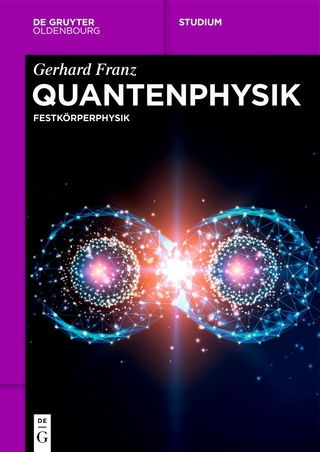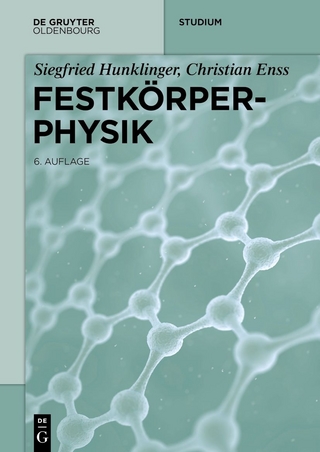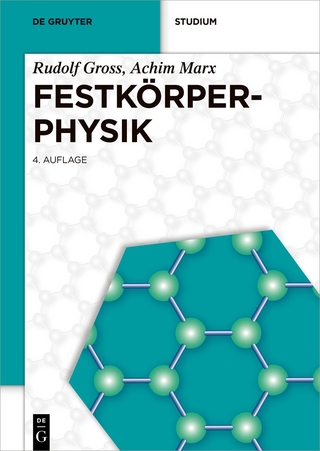
Compendium of Thermophysical Property Measurement Methods
Kluwer Academic / Plenum Publishers (Verlag)
978-0-306-41424-4 (ISBN)
- Titel ist leider vergriffen;
keine Neuauflage - Artikel merken
This reference work, the Compendium of Thermophysical Property Measurement Methods, is the result of the first phase of work on this program. It is a summary of the state-of-the-art methods for the measurement of thermal and electrical conductivity, thermal diffusivity, specific heat, thermal expansion, and thermal radiative properties of solid materials, from room temperature to very high temperatures.
I. Thermal Conductivity Measurement Methods.- 1. Axial Heat Flow Methods of Measuring Thermal Conductivity.- 1. Introduction.- 2. General Considerations.- 3. Basic Problems in Axial Heat Flow.- 4. Operating Procedures.- 5. Experimental Systems.- References.- 2. Analysis of Apparatus with Radial Symmetry for Steady-State Measurements of Thermal Conductivity.- 1. Introduction.- 2. Fundamental Radial Heat Flow Apparatus.- 3. Thermal Analysis-HEATING5.- 4. Heat Flow in a Fundamental RHFA with Right-Circular Symmetry.- 5. Heat Flow in Experimental Apparatus for Measurements on Solids.- 6. Thermal Conductivity Measurements on Powders Using Radial Heat Flow Apparatus.- 7. Thermometry in Radial Heat Flow Apparatus.- 8. Conclusions.- 9. Recommendations.- References to Appendix.- References.- 3. Thermophysical Property Determinations Using Direct Heating Methods.- 1. Introduction.- 2. Background.- 3. Description of Several Direct Heating Apparatus.- 4. Experimental Difficulties and Critical Evaluation of Direct-Heating Methods.- 5. Summary.- References.- 4. Guarded Hot-Plate Method for Thermal Conductivity Measurements.- 1. Introduction.- 2. Principles of the Method.- 3. Apparatus Types.- 4. Field of Application.- 5. Apparatus Description and Design Requirements.- 6. Error Evaluation. Performances.- 7. Limitations Due to Specimen.- 8 Realizations and Measurement Results.- 9. Reference Materials and Interlaboratory Comparative Measurements.- 10. Conclusions.- References.- 5. Hot-Wire Method for the Measurement of the Thermal Conductivity of Refractory Materials.- 1. Introduction and Background.- 2. Experimental Techniques.- 3. Comparison with Other Methods.- 4. Modifications.- 5. Summary.- References.- 6. B.S. 1902 Panel Test Method for the Measurement of the Thermal Conductivity of Refractory Materials.- 1. General Introduction.- 2. General Outline of the Method.- 3. Error Analysis.- References.- II. Electrical Conductivity Measurement Methods.- 7. High-Temperature Measurements of Electrical Conductivity.- 1. Introduction.- 2. General Considerations About the Conductivity Measurements.- 3. Measurement of Total Conductivity: Two- and Four-Probe Arrangements.- 4. Measurements on Mixed Conductors.- 5. Spurious Effects in High-Temperature Measurements of Electrical Conductivity.- 6. Contacts and Electroding Techniques.- 7. A Short Survey of Instrumentation.- References.- III. Thermal Diffusivity Measurement Methods.- Thermal Diffusivity: Introduction.- 8. Pulse Method for Thermal Diffusivity Measurement.- 1. Introduction.- 2. The Method.- 3. Experimental.- 4. Transient Temperature Measurement.- 5. Measurement Errors.- 6. Summary.- References.- 9. Temperature Wave Techniques.- 10. Electron Bombardment Modulated Heat Input Method.- 1. Introduction.- 2. Principle of the Procedure Used for Thermal Diffusivity Measurement by Modulated Electron Bombardment.- 3. Physical Principles Interfering with Heating by Electron Bombardment.- 4. Mathematical Principles for the Experimental Determination of Thermal Diffusivity by Modulated Electron Heating.- 5. Experimental Techniques of Thermal Diffusivity Measurement Using Modulated Electron Heating.- 6. Conclusions.- References.- 11. Monotonic Heating Regime Methods for the Measurement of Thermal Diffusivity.- 1. Measurement of Thermal Diffusivity in the Narrow Temperature Range.- 2. Measurement of Thermal Diffusivity in the Wide Range.- References.- IV. Specific Heat Measurement Methods.- Specific Heat: An Introduction.- 12. Adiabatic Calorimetry.- 1. Introduction.- 2. Method.- 3. Adiabatic Calorimeters.- 4. Automatic Control of Adiabatic Conditions.- 5. Estimation of Errors of Adiabatic Calorimetry.- References.- 13. Heat-Capacity Calorimetry by the Method of Mixtures.- 1. Introduction.- 2. Fundamental Considerations.- 3. The Method of Mixtures.- 4. Classification and Description of Drop Calorimeters.- 5. Current Activity and Future Prospects.- References.- 14. Levitation Calorimetry.- 1. Introduction.- 2. Peculiarities of Investigations of Thermodynamic Properties of Refractory Metals and Their Melts at Temperatures Above 1500-2000 K.- 3. Levitation Heating.- 4. Measurement of Temperature of Solid and Liquid Specimens.- 5. Facilities for Levitation Calorimetry and Description of Experimental Procedures Used.- 6. Measurement Errors.- References.- 15. Modulation Calorimetry.- 1. Introduction.- 2. Theory of Modulation Method.- 3. Modulation of Heating Power.- 4. Registration of Temperature Oscillations.- 5. Nonadiabatic Regime of Measurements.- 6. Direct Measurement of Temperature Coefficient of Specific Heat.- 7. Determination of Isochoric Specific Heat Using Temperature Fluctuations.- 8. Measurements at High Modulation Frequencies.- 9. Modulation Methods for Studying Thermal Expansion, Electrical Resistivity, and Thermopower.- 10. Determination of Temperature of Wire Samples by Thermal Noise.- 11. Accuracy of Modulation Measurements.- 12. Employments of Modulation Methods.- 13. Conclusion.- References.- 16. Pulse Calorimetry.- 1. Introduction.- 2. Description of Methods.- 3. Chronology of Developments.- 4. Experimental Difficulties and Sources of Errors.- 5. Summary and Conclusions.- References.- 17. Application of Differential Scanning Calorimetry to the Measurement of Specific Heat.- 1. Introduction.- 2. Differential Thermal Analysis and Differential Scanning Calorimetry..- 3. Operating Variables.- 4. Practical Aspects.- 5. Concluding Remarks.- References.- V. Thermal Expansion Measurement Methods.- 18. Thermal Expansion Measurement by Interferometry.- 1. Introduction.- 2. Interference Patterns.- 3. Dilatometric Interferometers.- 4. The Experimental Cell.- 5. Experimental System Layout.- 6. Data Acquisition and Treatment.- References.- VI. Thermal Radiative Property Measurement.- 19. Measurement of Thermal Radiation Properties of Materials.- 1. Introduction.- 2. Thermal Radiation Techniques.- 3. Measurement of Thermal Radiation Properties.- 4. Discussion and Conclusions.- Appendix: Nomenclature.- References.- VII. Thermophysical Property Standard Reference Materials.- 20. Certified Reference Materials for Thermophysical Properties.
| Erscheint lt. Verlag | 31.7.1984 |
|---|---|
| Zusatzinfo | 146 black & white illustrations, biography |
| Verlagsort | Dordrecht |
| Sprache | englisch |
| Themenwelt | Naturwissenschaften ► Physik / Astronomie ► Festkörperphysik |
| ISBN-10 | 0-306-41424-4 / 0306414244 |
| ISBN-13 | 978-0-306-41424-4 / 9780306414244 |
| Zustand | Neuware |
| Haben Sie eine Frage zum Produkt? |
aus dem Bereich


